
Chanel Fall 2016 Collection
With the recent Paris Fashion Week having just finished predicting trends for Fall 2016, what better time than now to reflect on where some of these upcoming styles actually originate from, and the brilliant designers who either created or popularized them? Chanel, Dior, Saint Laurent; these French household names of talented courtiers have left a greater footprint in women’s fashion history than most women (and men) are aware of. By looking at their innovative works from the 1900s, we can understand the enduring influences that pop up in the runway and ready-to-wear collections year after year.
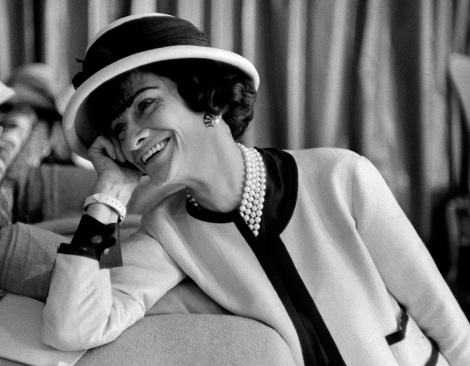
Classic Chanel
When one thinks of Chanel, high luxury comes to mind. However, another concept that emerged from the prestigious brand is the idea of comfortable yet luxurious casualwear. Gabrielle “Coco” Chanel channeled simplicity and functionality in her innovative designs inspired by menswear, integrating the use of jersey materials that influenced women to lead more active and practical lifestyles. Boyish sporty styles such as trousers, boxy lines and other nautical elements paired with cropped hair liberated women from the confining corsets and constrictive clothing at the time. Known for her exquisite tailoring, she took pride in her role as a woman designing for other women and introduced the famous little black dress, No. 5 perfume, and trademark tweed suit. The signature straight-cut suit consisted of a collarless cardigan-style jacket and slim skirt, finished off with braided trim, large buttons, and real pockets. With her modern aesthetic, Coco Chanel truly inspired the women she dressed to be daringly different, “classy and fabulous”, and timelessly stylish.
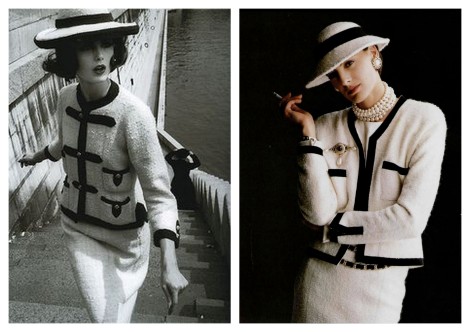
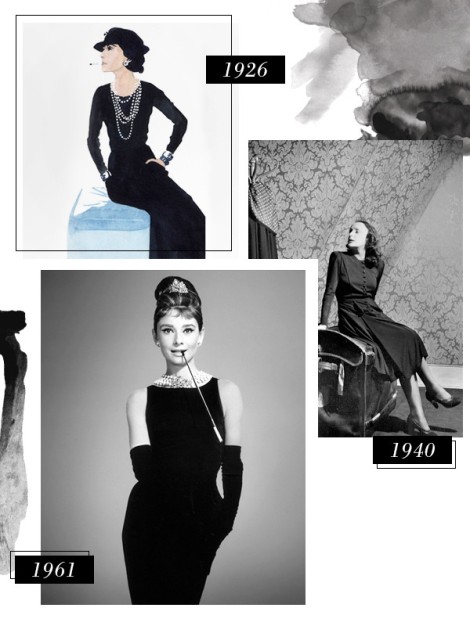
Dior and Contour
Overlapping with the generation of Chanel, the presentation of Christian Dior’s first couture collection on February 12th, 1947 ushered in refreshing and lighthearted styles that were much needed in the post-war era. He himself described his instantly successful collection, dubbed the New Look, as “the return to an ideal of civilized happiness.” The war-weary population welcomed the sloped shoulders, emphasized busts, cinched waists, and voluptuous hips that both accentuated and exaggerated the female figure with an hourglass silhouette. The full long skirt required an extravagant amount of fabric, contradicting the mentality of regulations and rationing. In drastic contrast to the previous gray and uniforms, Dior’s New Look symbolized optimism, stability, and hopes for a brighter future. The highest height of femininity was praised, reviving the idea of beauty through soft yet extreme shapes. Dior’s iconic model of the collection was the two-piece Bar Suit composed of a pale fitted jacket and black knife pleated skirt. Beautifully constructed and complex, this piece of architectural art formed by legendary curves continues to provide stylistic inspiration to this day.
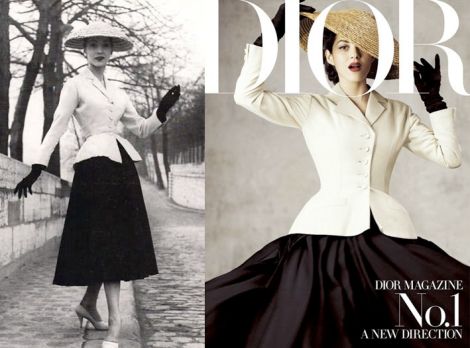
A Revered Saint
Christian Dior’s hand-picked successor Yves Saint Laurent was the last of the influential generation of Parisian designers, revolutionizing womenswear in the 1960s and 70s. Saint Laurent believed “that fashion was not only supposed to make women beautiful, but to reassure them, to give them confidence, to allow them to come to terms with themselves.” He popularized and modernized the trenchcoat, safari jacket, and unisex perfume, but his signature item was le smoking jacket, the first tuxedo for women debuted in 1966. The androgynous look was so revolutionary that it was met with resistance; some women were not permitted to enter high class restaurants and hotels in le smoking jackets. This classic creation, along with his Beatnik chic style and sleek pantsuits, challenged the definition of femininity and declared sexual equality with the use of menswear silhouettes. After all, what is more empowering than a woman confidently sporting what is traditionally men’s clothing, and also having the ability to pull it off in an elegant, sophisticated way? As Saint Laurent once noted, “For a woman, le smoking is an indispensable garment with which she finds herself continually in fashion, because it is about style, not fashion. Fashions come and go, but style is forever.”
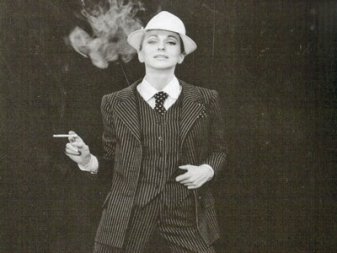
“For a woman, le smoking is an indispensable garment with which she finds herself continually in fashion, because it is about style, not fashion. Fashions come and go, but style is forever.”
Saint Laurent
With the constant changes in what’s in one season and what’s out in another, one fact remains the same: fashion is a creative means of self-expression and empowerment for women all over the world. Wearing pieces that are flattering, comfortable, and/or have significant meaning, can create a number of positive feelings; clothes have a certain capability of making women feel confident, smart, unique, and ultimately beautiful. We learned from Chanel that luxury and comfort are not mutually exclusive, and that high end clothing can be both upscale and practical. Dior and his New Look taught us that fashion can be used as statements in society, encouraging women to celebrate and embrace their softer side. Saint Laurent bestowed upon women increased freedom to express varying levels of femininity and masculinity. Each of these prominent French designers changed both the history and future of fashion through their radical timeless pieces that emancipated women from the constraints of their respective eras. Freedom is power, and within the reign and art of fashion, that sweet freedom is excitingly unlimited.
